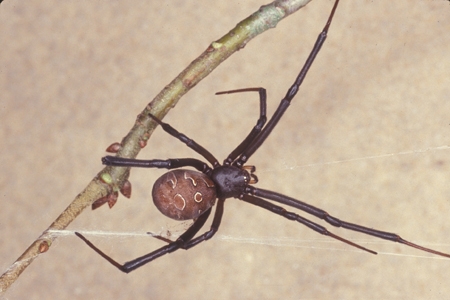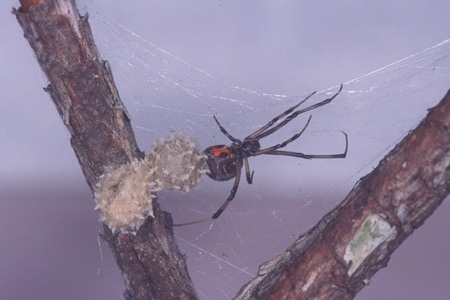Active Seasons




Brown Widow Appearance and Size Facts
The brown widow spider is a venomous spider species that is closely related to the infamous black widow spider. While the bite of a brown widow spider is less dangerous than the bite of a black widow, it should still be taken seriously. Brown widows are prolific breeders, laying over 150 eggs per sac and over 20 sacs in a lifetime. This means that it can be hard to control an infestation once it starts.
The brown widow spider is a venomous spider species found in various parts of the world, including the United States, Africa, Asia, and Australia. It is closely related to the black widow spider and shares some similarities in terms of physical appearance. Here are some key characteristics of the brown widow spider:
- Light to medium brown
- Brown, yellow, and orange abdomen
- 1 to 1.5 inches long
- Round abdomen and long, spindly legs
- Less distinctive marks than black widows
Identifying Brown Widow Spiders From Other Spiders
Identifying a brown widow spider from other spider species can be challenging. There are several key features and characteristics that can help you distinguish a brown widow spider from others:
- Coloration and markings. Look for distinctive patterns on the abdomen.
- Size. Brown widows are typically smaller than black widows—around one inch in length.
- Web characteristics. Brown widows construct irregular, messy webs that are found in sheltered locations. These webs tend to have a cobweb-like appearance.
- Legs. Brown widow spiders have long, slender legs banded with alternating light and dark colors.
If you are struggling to determine if brown widows are at the root of your infestation, consult the experts at Hulett Environmental. You can schedule a free inspection so we can determine what type of pest you are dealing with, and then we can help get rid of it!
We service brown widow spiders in the following locations and their surrounding areas:

Behavior and Habitat of Brown Widow Spiders
Brown widow spiders are adaptable and can thrive in a variety of environments, including urban areas. They are commonly found in warm, tropical, and subtropical regions. This means if you live in a warm or humid area or keep your home on the warmer side, you might be at risk.
As for behavior, brown widow spiders are known for being less aggressive than black widow spiders. They would prefer to play dead than bite, and they tend not to defend their webs. They are timid and generally avoid human interaction.
While brown widows might be less aggressive than other spiders, they still pack a punch. Brown widow bites are painful and carry a risk of infection. This is why it is so important to seek the professional help of the pest experts at Hulett if you suspect a brown widow infestation.

Signs of Infestation of Brown Widow Spiders
Preventing brown widow spiders and managing their presence around your home or property can help reduce the chances of encountering them and the problems they bring. Here are some helpful tips to minimize infestations of the brown widow spider:
- Seal any entry points.
- Trim vegetation.
- Screen vents and openings.
- Keep outdoor areas clean and regularly inspect them.
- Regularly clean and dust.

Tips for Prevention of Brown Widow Spiders
If you are dealing with a brown widow spider infestation, trust Hulett Environmental to get rid of your pest problem. We offer a free initial pest inspection to determine the source and severity of your spider infestation and a variety of pest control options to eliminate it. We have green pest control methods and practice pet-friendly pest control, so you can eliminate your pests without causing undue risk to your family and furry friends.
Schedule your free inspection today or call our team for more information on how Hulett can remove your pests and return your home to the pest-free place you love!



